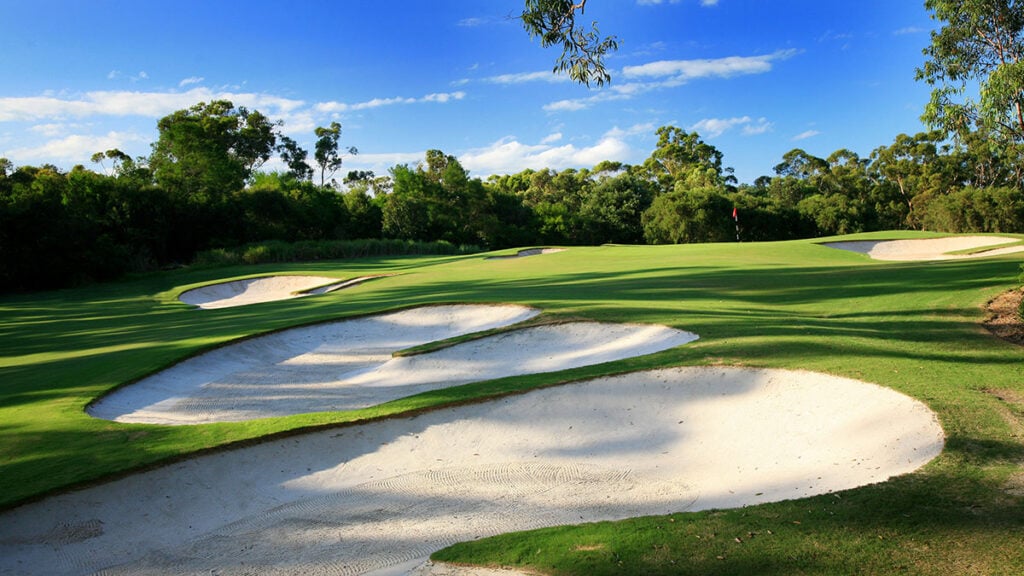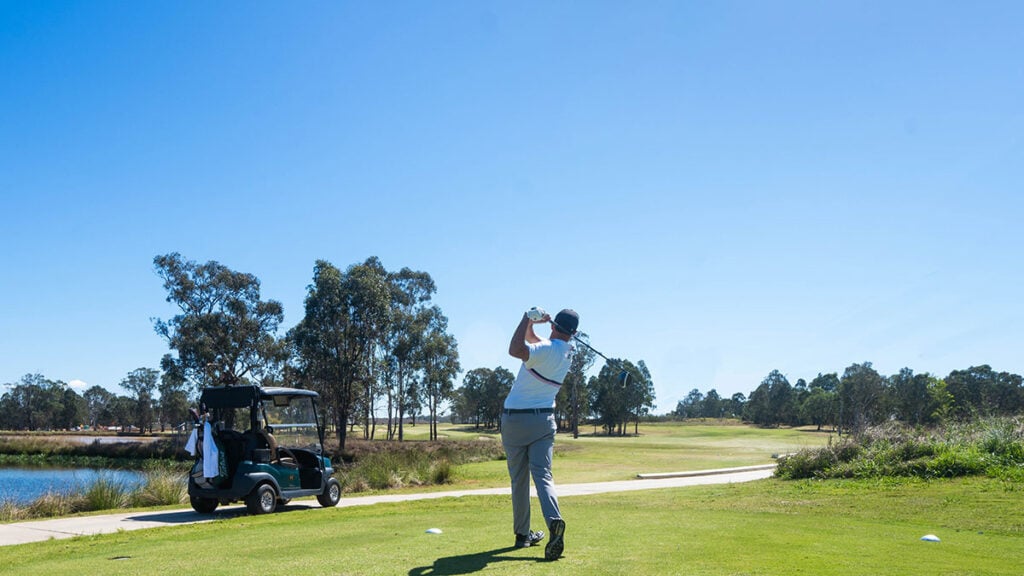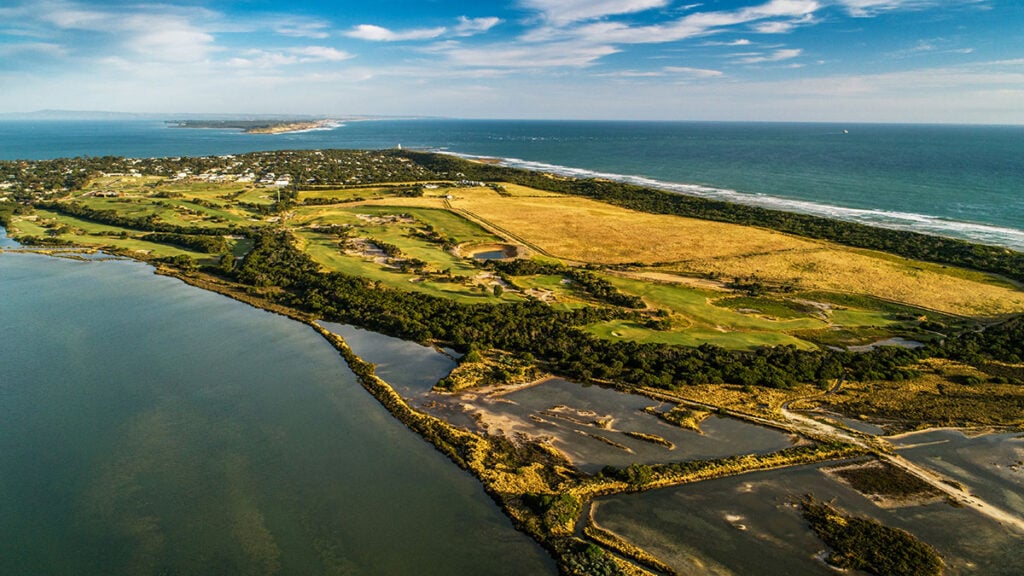A closer look at Victoria’s newest and must-play golf courses.
Plenty happened across Victoria while it was in partial hibernation during 2020. The state that owns the lion’s share of our great golf courses was not sitting idle in lockdown. Rather, the place was alive with activity that included the redesign of two time-honoured courses. Both renovations were significant for much more than the reworking of the playing ground alone. One set a model for other golf clubs and courses to follow while the other forged a new home for the game in Australia, all in the shadows of the best course in the land.
Importantly, Lonsdale Links and Sandy Links welcome all golfers, which is always a bonus. Yet in truth any of the courses listed here will be grateful for your visitation. Victoria is blessed with the best of Australian golf but its clubs felt the financial hit as much as anywhere during COVID-19. Now more than ever, Victoria’s appeal as a golf destination feels hot even as the weather cools down.
Here are 10 courses that deserve to be on your Victorian-golf radar.
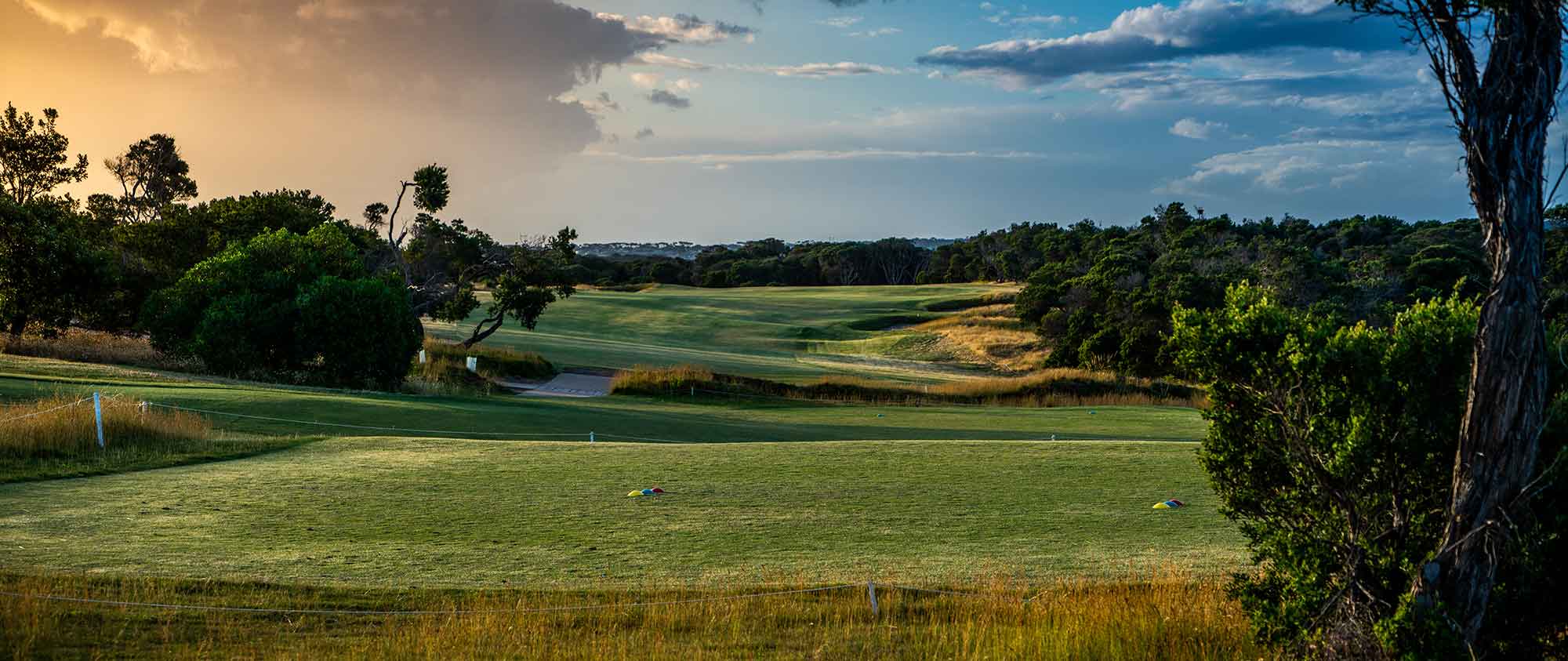
Lonsdale Links
Lonsdale Links is the kind of place more golf courses should aspire to be like. The redesigned course plus new clubhouse and practice facilities are tremendous assets for the local area but also for golf in general. Why? The 5,275-metre course beautifully straddles that all-important line between being repeatedly challenging for good golfers while remaining user-friendly for novice players. Plus, the excellent practice area, six-hole par-3 course and new clubhouse that includes an outdoor children’s playground make for the complete package. It’s a model for the future.
The course redesign by Ogilvy Cocking Mead (OCM), which was unveiled in late December, essentially left the footprint of the first six holes untouched, and with good reason. They were the highlight of the previous version and touch the southern edge of Lake Victoria in what is a delightful pocket within the layout. The remaining 12 holes, however, received a total makeover. There are enticing driving lines available on several holes, coupled with less demanding options that simply make the next shot a little more awkward. Steep runoffs bound many green complexes and introduce a variety of chipping options.
The putting surfaces mix linear and irregular shapes. Almost in direct opposition to the voluptuous profiles within them, many greens feature squared-off edges – including the 11th green, which is entirely rectangular but inside the four straight sides is a series of small humps that give the green great character. Plus there are the two shaggy mounds directly in front of the surface of the short par 5.
Much of Lonsdale’s wildly entertaining side hinges on pin positions and the weather. This curvy and creative course is endlessly fascinating to attempt to conquer thanks to contours that spark the imagination. Every green has at least some little elbow or ridge to decipher and often several. They give rise to endlessly fascinating golf.
Half the holes pay homage to the enduring design work of the great Charles Blair Macdonald. These nine “template” holes borrow elements of Macdonald’s most famous holes, including a Biarritz green at the second, a thumbprint-style depression within the 12th green, a reverse version of the Redan at 14 and even a nod to the famous Road Hole on the Old Course at St Andrews at the 16th.
That 16th might just be the most fun hole of all – a 250-metre par 4 played from an elevated tee to a green set flush against an out-of-bounds fence and wrapped around a central bunker. It’s an admirable tribute to the Road Hole, although with a quite different green complex. It is certainly driveable, however shots played from any distance need to respect the dangers ringing the green, which sits flush against a fence that – unlike the wall at the Road Hole – won’t repel and ‘save’ many errant shots. It’s the kind of quirky yet quintessentially cool golf you’ll encounter right across Lonsdale Links.
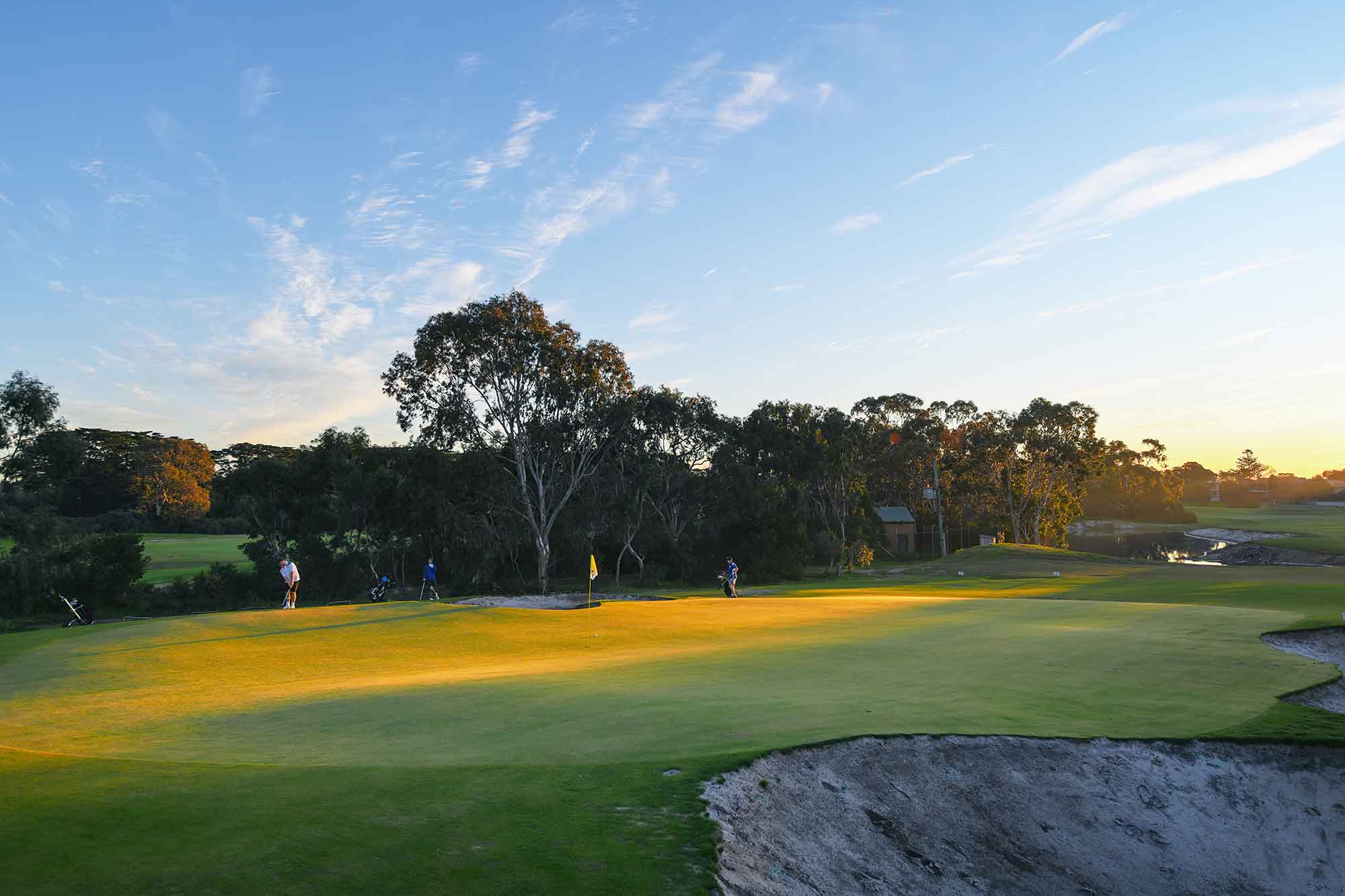
Sandy Links
Billed as a Sandbelt experience for every golfer, Sandy Links is another redesigned layout, another artful piece of architectural work by OCM and another pint-sized offering. The redevelopment of Sandringham Golf Course continued the sport’s penchant for ‘downsizing’ on a site next door to famed Royal Melbourne Golf Club.
And the original intent was to go even shorter. OCM initially proposed a 12-hole layout and then 15 holes. The firm saw an opportunity to incorporate new elements into a golf facility that would appeal to a broader demographic, yet golf’s 250-year-old convention of a course consisting of 18 holes won out. All told, Sandy Links taps out at 4,835 metres from the men’s tees and plays to a par of 65. The 11 par 4s range in length from 270 to 370 metres while the seven par 3s start at just 135 metres and stretch all the way up to 200.
It’s a golf course with a difference in more ways than one. Among the innovations at Sandy Links are the offer of free golf for kids younger than 16 accompanied by a playing adult (after 1.30pm), advocating maximum scores and even encouraging players to throw balls out from bunkers if they prove too tricky. Meanwhile, the design is intricate and challenging enough to test the golf grey matter of low-handicap players, who need to attack from precise spots.
Partly funded by the Victorian Government, Sandy Links is already a base for Victorian Institute of Sport high-performance athletes and will eventually be home to a public driving range as well as becoming the administrative hub of Golf Australia and the PGA of Australia.
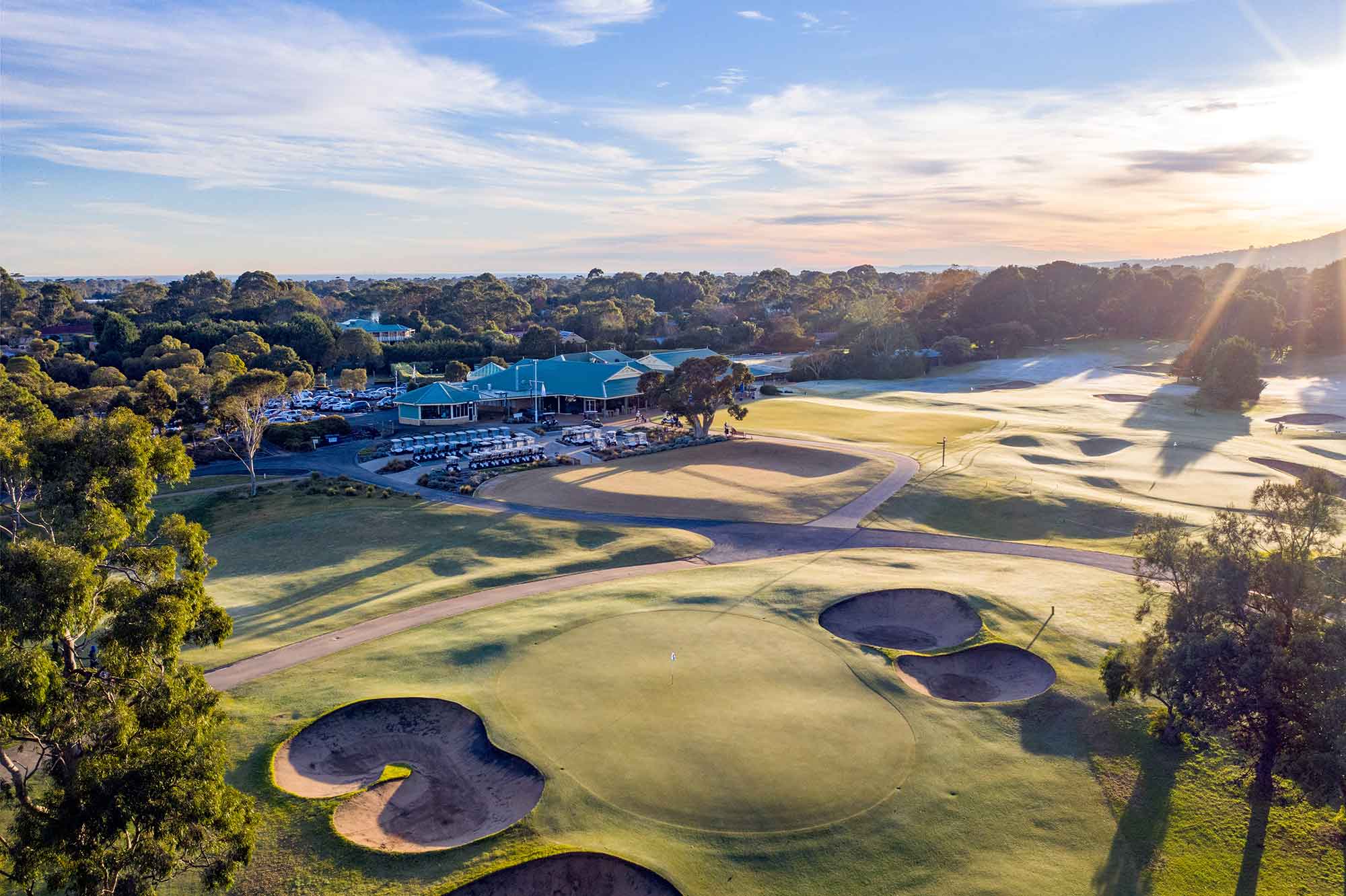
Rosebud Country Club
Rosebud is still buzzing from a successful staging of the inaugural Players Series tournament in late January. Australia’s best home-grown touring professionals – male and female – as well as our rising junior stars converged to make for a memorable weekend on the Mornington Peninsula.
Later this year Rosebud Country Club will go more global when it hosts one of the European Tour’s Qualifying School events. Originally set to break that exciting ground last September, COVID-19 put paid to that plan and forced the qualifying tournament back to September 2021 instead, depending on the travel situation at the time.
The club is thriving amid record membership levels and playing numbers, and outstanding reviews of its two golf courses. Rosebud offers high-calibre golf across two courses, and recent works to the North course have highlighted the quality of the property. Last year, the club engaged OCM to develop a full course master plan, which will ensure members and visitors enjoy outstanding golf for many years to come.
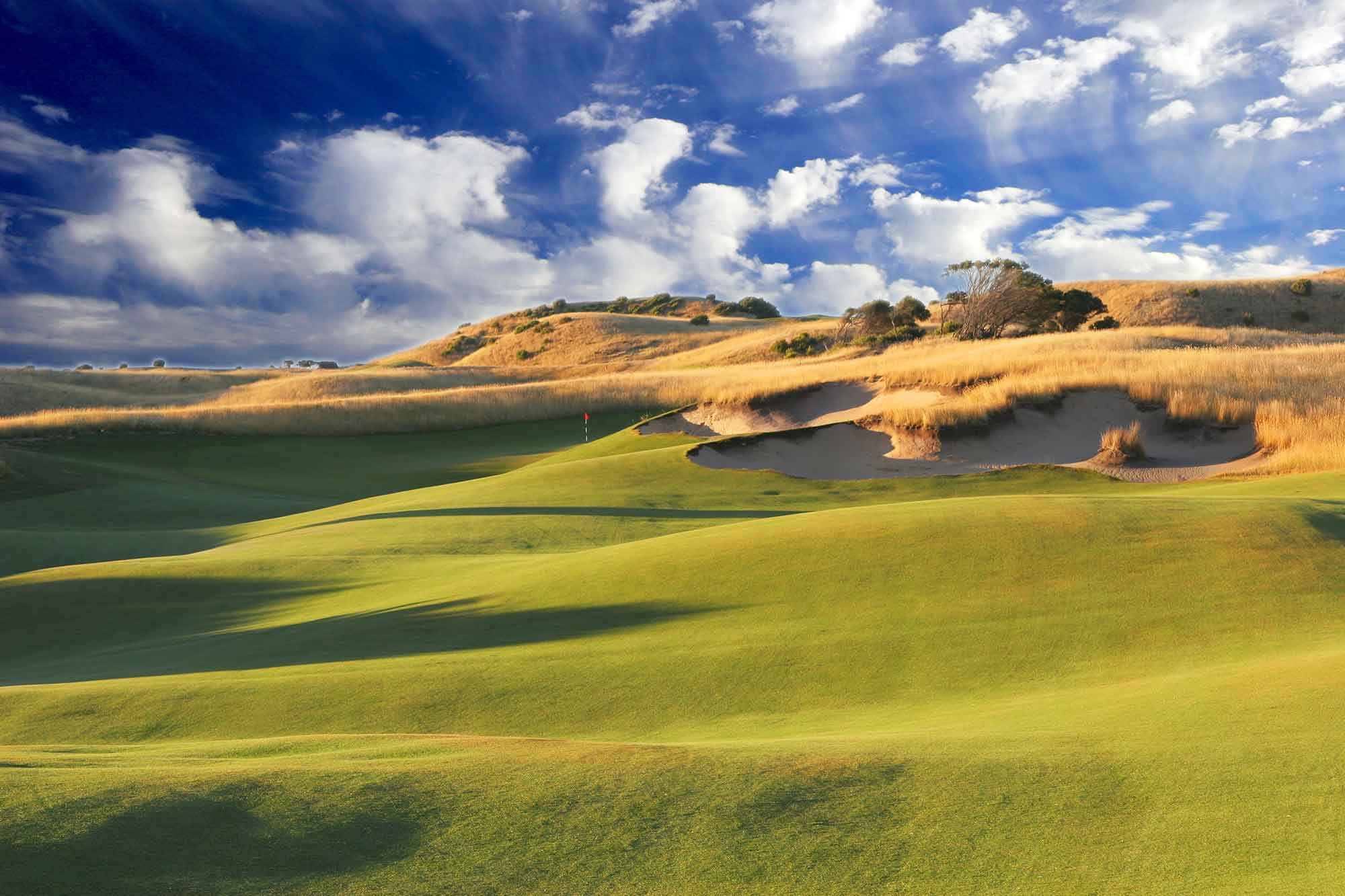
St Andrews Beach Golf Course
American course architect Tom Doak has the knack of providing golfers with an abundance of room in which to work but somehow simultaneously using these vast open spaces to force players to handcuff themselves. St Andrews Beach is full of opportunities to score, openings so wide that the bold play almost has to be taken for it would feel too timid not to. And therein lies the genius in Doak’s first addition to the Mornington Peninsula; he arms you with the weaponry to fire away but in most instances the ammunition will explode in your hands.
Part of an ambitious project that was initially intended to include 36 holes, St Andrews Beach today remains at 18 – but they are 18 tremendous holes. The layout is a diminutive 6,074 metres and the par figure on several holes feels half a shot out, luring golfers into a potentially foolish play one minute then sitting them on their backsides the next. The bunkering dotted across the huge expanses of fairway is exceptional. Numerous blowout bunkers litter the landscape, huge pits creating difficult recoveries as the unending thrust and parry between course and golfer goes on.
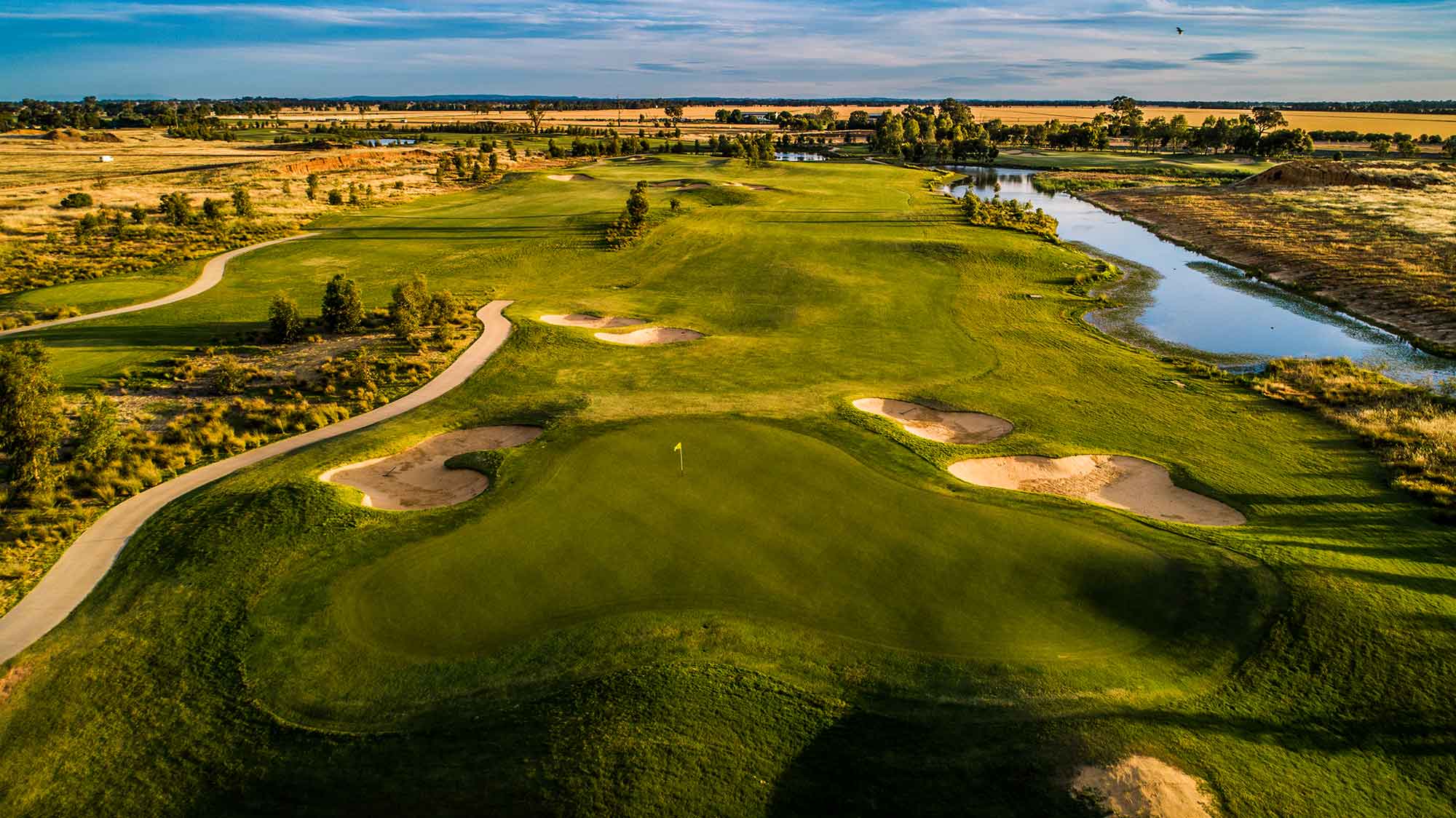
Black Bull Golf Club
A certain degree of audacity is required to muscle in on an established and much-loved golf destination. The Murray River has long provided golfers with a consistent and revered selection of top courses, flowing alongside the most impressive watercourse in the land. Yet much like the arrival of a precocious upstart in the professional ranks of the game, a newcomer surfacing that’s better than the rest can have an unsettling effect. But not so for Black Bull Golf Club. The reaction during the past six years to the course’s opening in 2015 has been nothing but positive from the region, visiting golfers and other courses along the river.
The course is a distinct departure from the rest of the Murray line-up, which makes for a welcome variation. You won’t find towering treelines and forests flanking the fairways here. Golfers are instead given room to play from tee to green, but as the flat and mostly exposed site is susceptible to wind whipping off neighbouring Lake Mulwala, there often needs to be a little space to work with. Black Bull is part linksy, part ‘resort-y’ and all mighty. Golfers are enjoying this particular Murray blend.
And now open on the lakeside site is the Sebel Yarrawonga, which offers three food and beverage outlets as well as a dedicated day spa, gymnasium, 300-seat conference space and 63 stylishly appointed rooms and apartments.
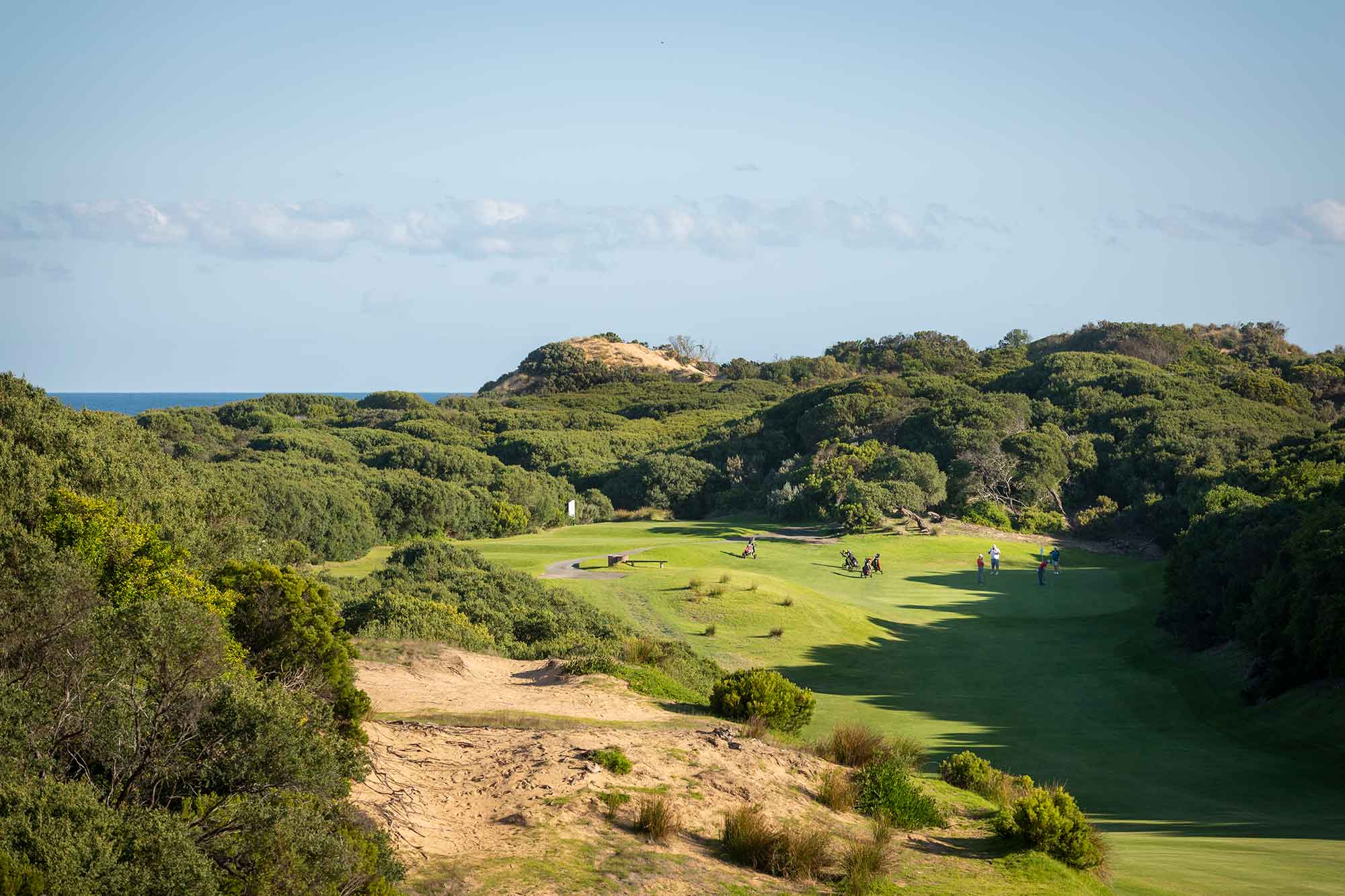
Warrnambool Golf Club
Marc Leishman’s home club and a fun but occasionally wild golf course to play, Warrnambool occupies a stunning piece of capricious coastal land as well as a place in Australian golf’s heart. The course winds its way behind a tertiary dune system and its classically designed holes feature a number of spectacular elevated tees, ti tree-lined fairways and tight driving holes. Locals have always known it, but now Warrnambool is fast gaining a reputation for not only its impressive and surprising 18-hole layout but also for the superior quality and presentation of its course.
Leishman himself can see what makes the place so special.
“There are many things I love about Warrnambool Golf Club and the town, but obviously, the course is the centrepiece. There are so many great holes that make you think, play smart, get creative and most of all have fun,” he told Australian Golf Digest last year while reminiscing about his hometown during the COVID-enforced pause on the PGA Tour that saw tournament action halted for three months.
“Warrnambool teaches you how to play in the wind and create shots. I think 90 per cent of my ability to play those wind shots now on the PGA Tour comes from where I grew up, because I feel comfortable hitting those shots in the elements. It was always a heavy wind in Warrnambool. It was different from other winds. Like the wind in America compared to the British Open, it’s very different. It’s almost like a 10-mile-an-hour wind at Warrnambool is equivalent to 20 in Melbourne. It’s just a heavier wind coming off the ocean and it’s cold air. The ball doesn’t go as far and that’s a challenge. So, I think understanding that has had a big impact on playing in the wind in British Opens and probably my success over there.”
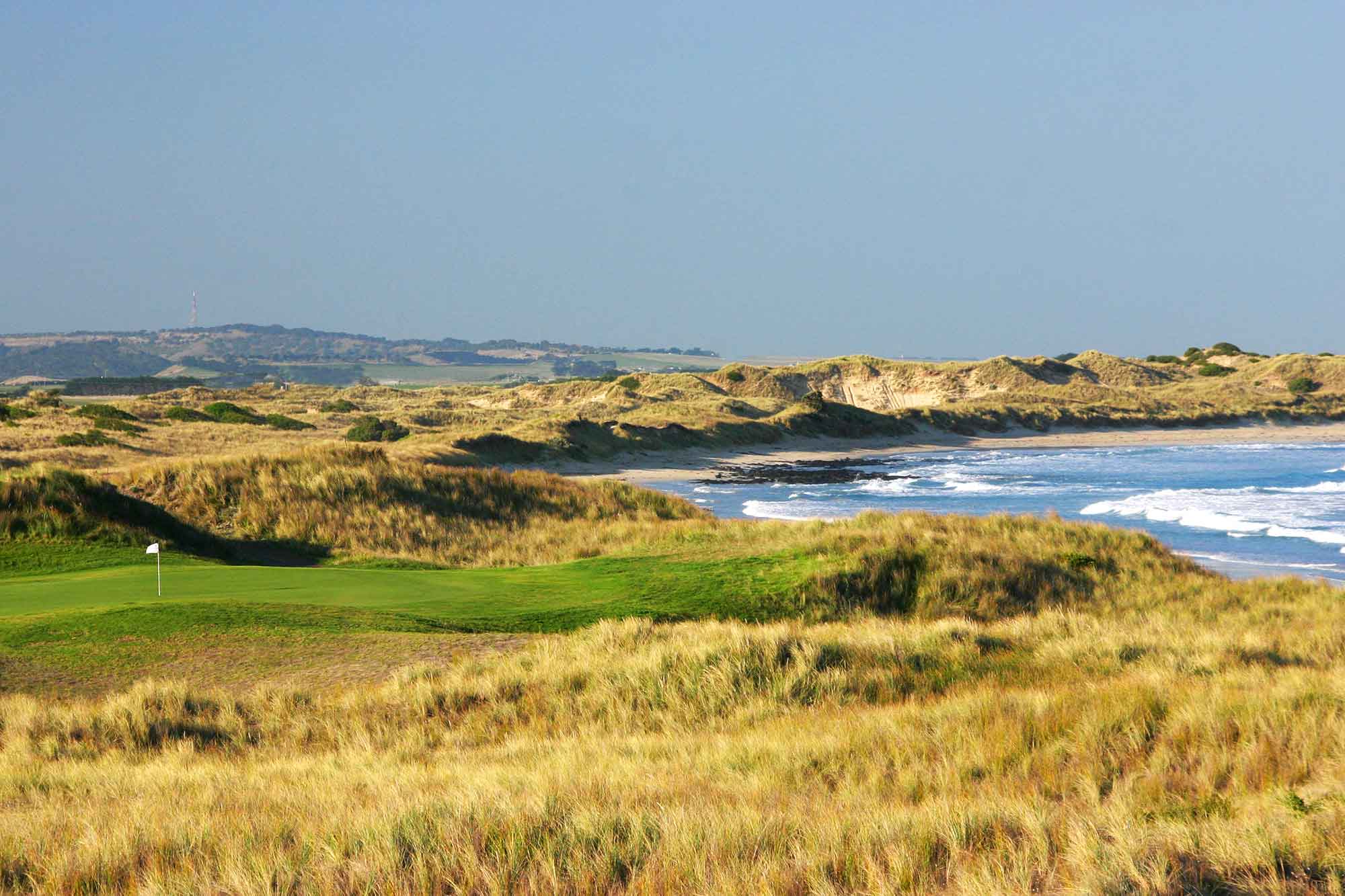
Port Fairy Golf Club
Surely no golfer has ever made the journey to the Port Fairy course and walked away disappointed with the voyage or unimpressed by what they found. A throwback golf course in so many ways, Port Fairy challenges golfers through its exposed location along Victoria’s south-west coastline where the wind can blow off your cap, and through a short but enchanting seaside layout. Short by modern standards, the 5,887-metre course punches far harder than its scorecard indicates, blowing many an unsuspecting golfer offline if they cannot manage their game in strong winds. A top-class double act when played before or after the nearby Warrnambool course, Port Fairy is an ornament to the best aspects of playing golf along a volatile coastline.
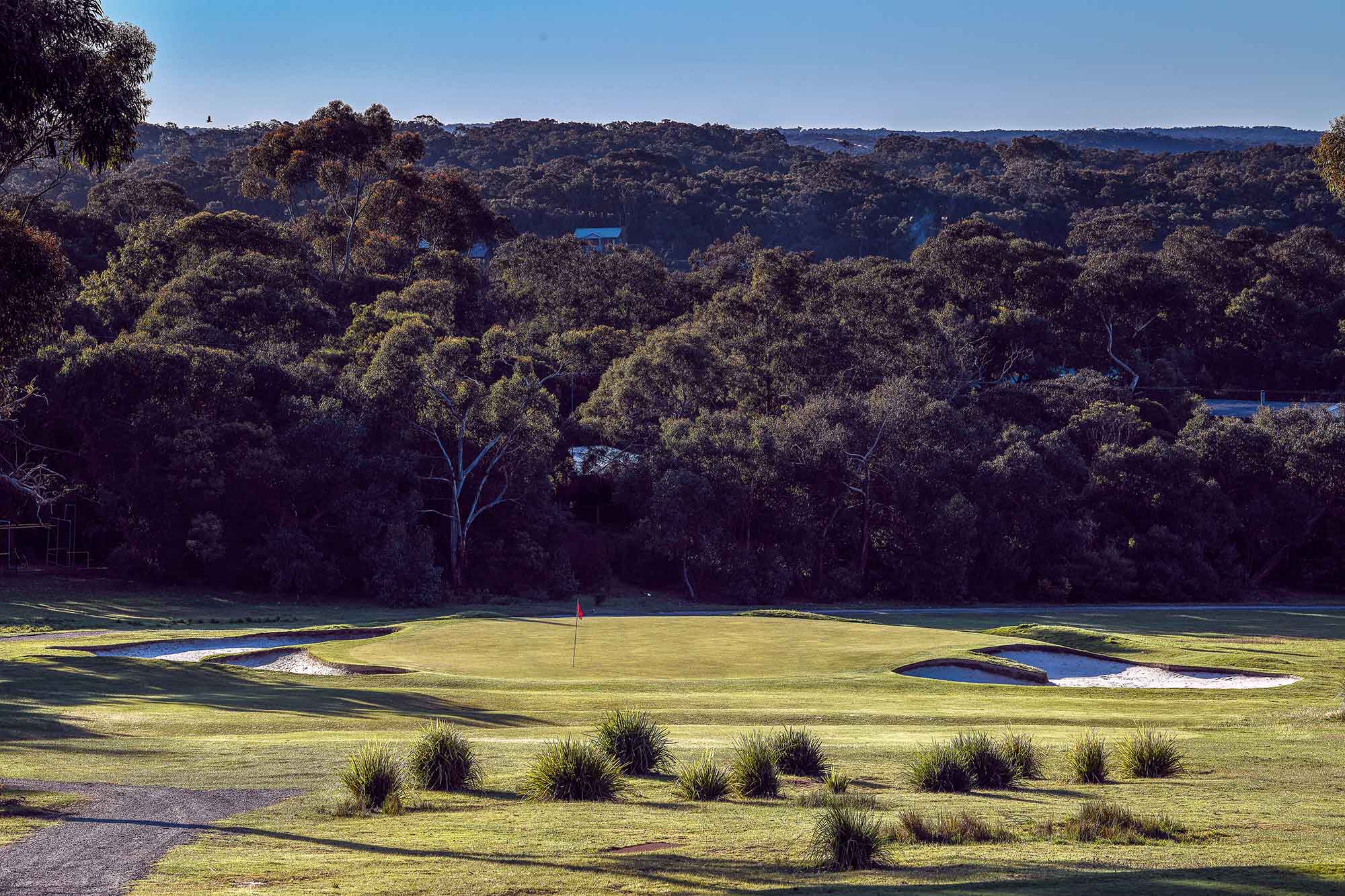
Anglesea Golf Club
Think of Anglesea Golf Club and one quintessentially Australian characteristic comes to mind: kangaroos. Lots of kangaroos. The course on the Great Ocean Road even conducts regular kangaroo tours, mostly thanks to club members who volunteer their time. But the abundance of descendants of ‘Skippy’ aside, Anglesea is a golf course with plenty to offer.
Designed and built nine holes at a time throughout the 1950s and ’60s, the Anglesea layout makes full use of the site’s undulating terrain. The Vern Morcom design intertwines the movement in the land with eucalypt-lined fairways and a collection of elevated greens in a serene setting.
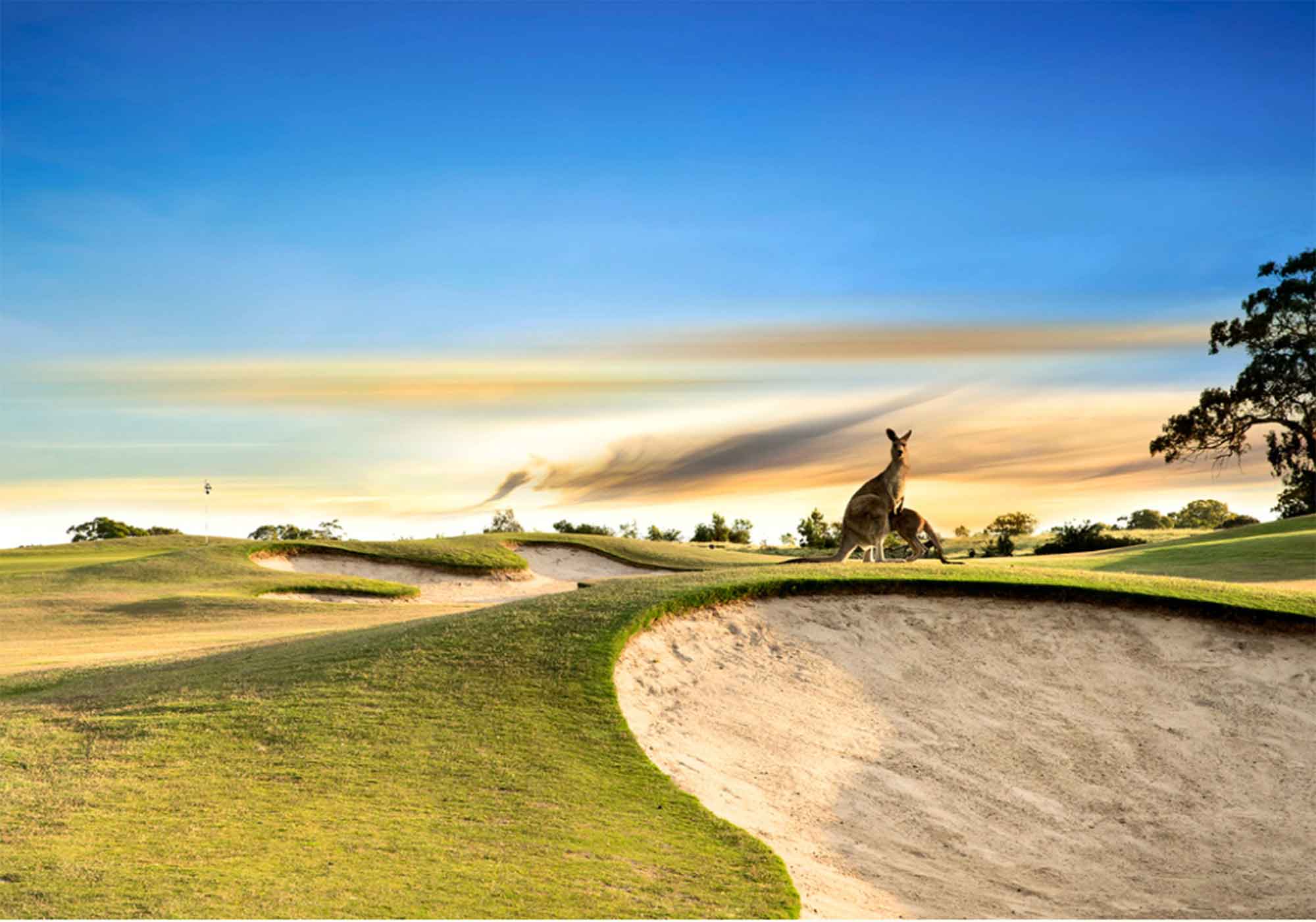
Growling Frog Golf Course
Kangaroos can be found on-course, sure, but it’s all about frogs at Yan Yean, north of Melbourne. Incredibly already 17 years old, the Graham Marsh-designed Growling Frog course is enjoying a revival of sorts under new management. Golf Services Management is in its second year of running the operations under a leasing arrangement with Whittlesea Council and Programmed Turnpoint looks after course maintenance. However, a distinct focus remains on ‘The Frog’ being environmentally sustainable (the layout runs completely on recycled watering). As the first course in Australia to be built using 3D and GPS tracking technologies, Growling Frog also integrates seamlessly within an environmentally sensitive location.
Mostly open and emphasising its playing angles, the 6,185-metre, par-72 layout is set on 113 hectares of bush and wetland that feature ancient river red gums, kangaroos and stunning views of the southern edge of the Great Dividing Range. Other wildlife you can probably count on seeing (or at least hearing) during a round include birds, ducks, rabbits and the eponymous Growling Grass Frog lurking in the course’s various wetlands.
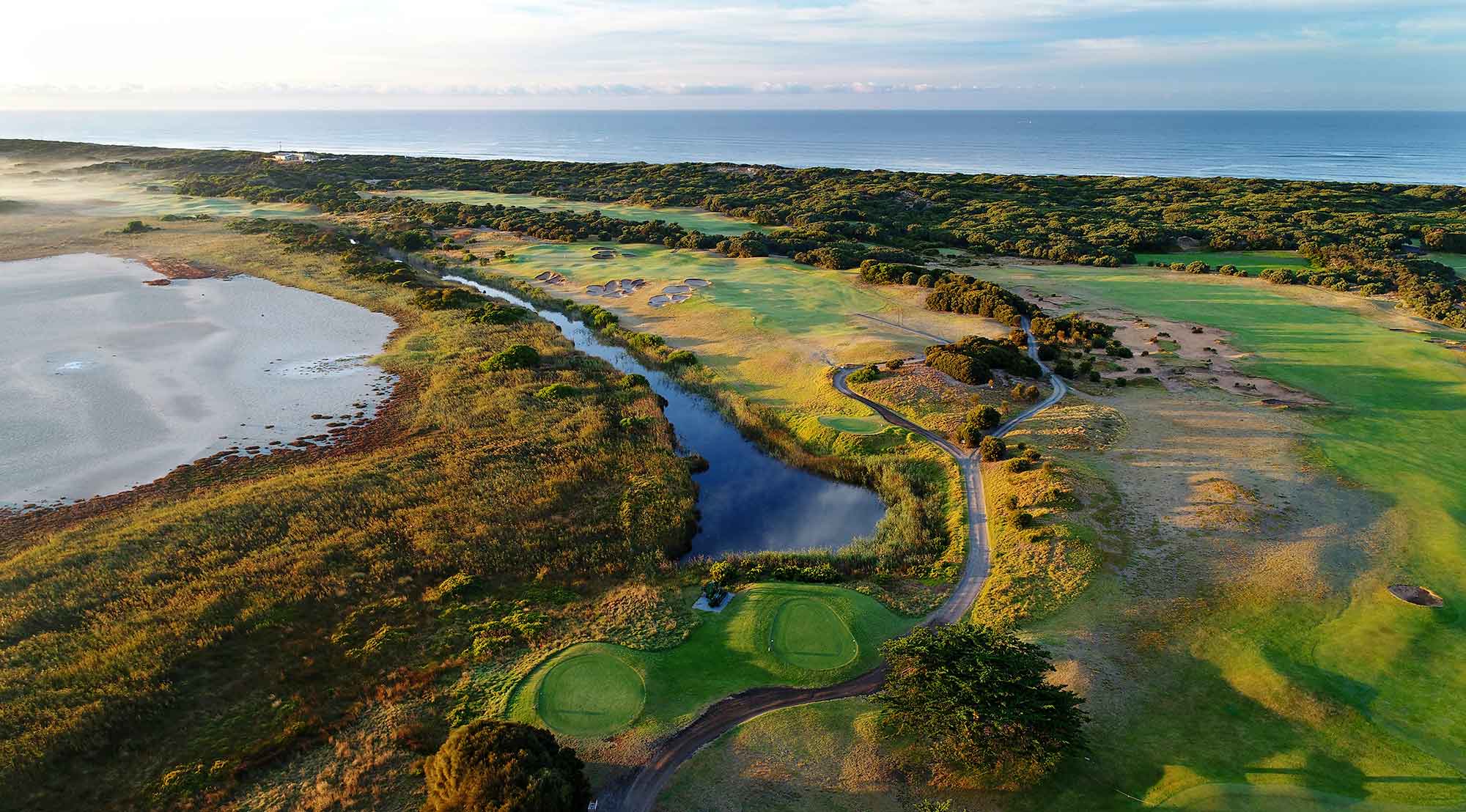
Thirteenth Beach Golf Links
Thirteenth Beach’s popular Beach and Creek courses now have a little sister. In March the club welcomed its latest golf offering: the Short Course. Comprising nine holes with multiple tees ranging from 105 to 188 metres, the new layout is a gentle walk and suitable as a challenge for any golfer. Designed by Tony Cashmore, just like the first 36 holes, the Thirteenth Beach complex now comprises 45 holes of golf.
Located at the north-western part of the property, the Short Course is accessible for members, residents, guests and visitors. Each hole presents a unique challenge with undulating greens and surrounds plus run-offs and swales to challenge approach shots and all aspects of the short game. It is accessible for all levels of player from beginner to experienced golfer alike. In keeping with the Beach and Creek layouts, the Short Course has a contemporary approach to dress code and is available to everyone at any time on an equal-access basis.
The elder two courses continue to enthrall and delight golfers looking for full-length challenges, with the twin Victorian Open venues continuing to provide complete examinations.

